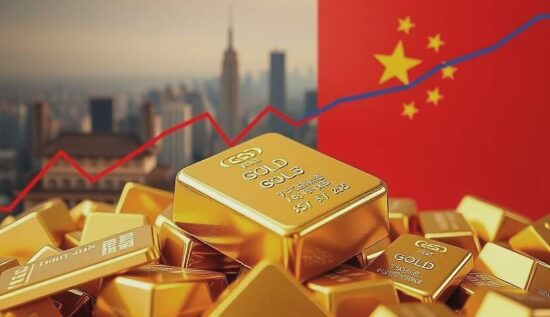Gold prices have reached a historic high after the trade dispute between the US and China escalated, sending global markets into a frenzy. On February 5, 2025, the spot price broke the $2,855.32 per ounce mark, with gold futures in the US rising to $2,884.60 per ounce, a clear indicator of the market’s ongoing dynamism.
This price surge is a direct result of the intensifying tensions between the two largest economies in the world, which is driving investors to seek safe havens like gold. The trade conflict between the US and China has reached a new escalation, with China retaliating with new tariffs on US imports, following the US imposition of tariffs on Chinese products. This latest round of retaliatory measures has sparked concern about the possibility of a full-blown trade war, which could further disrupt global supply chains and threaten economic stability.
In this tense situation, financial markets are reacting with high volatility, prompting many investors to flee to the classic “safe” asset of gold.
Gold has historically been a haven in times of crisis, offering a sense of security in the face of geopolitical and economic uncertainty. In the current situation, where markets are gripped by uncertainty about the political and economic future, gold is once again emerging as a stable investment. The metal underlines its role as a hedge against inflation and currency devaluations, making it a preferred investment in uncertain times.
In addition to the geopolitical tensions, the monetary policy of central banks is also having a significant impact on the current development of the gold price. Central banks in emerging markets, in particular, have been increasing their gold reserves in recent years to protect themselves against the uncertainties of the global financial system and potential shocks from unanticipated market changes.
The US Federal Reserve’s monetary policy, which has seen interest rates lowered, is also benefiting the gold environment. Lower interest rates make it less attractive to invest in interest-bearing assets, making gold a more attractive, interest-free investment. In a time when the Fed is still pursuing an unclear monetary policy and global financial markets are beset by numerous uncertainties, gold remains a magnet for capital investors.
Given the current geopolitical situation and the ongoing tensions between the US and China, many analysts expect the gold price to continue rising. Goldman Sachs has revised its forecast for the metal, predicting that gold could break the $3,000 per ounce mark by the end of the year. This forecast is based on a range of factors, including the continued demand from central banks, geopolitical uncertainties and the potential weakening of the US dollar.
As the unresolved trade disputes and uncertainty about the future of the global economy continue, the gold price appears to be on a stable upward trend. Investors will continue to closely watch the developments in the US-China trade conflict, as this could have a significant impact on global markets. Should the conflict escalate further, it is certainly possible that gold could break records again and further solidify its position as a safe haven for investors.
The recent rise in the gold price underscores a broader trend in global investment behavior: in times of increasing uncertainty, many investors are reevaluating their portfolios and increasingly turning to gold as a supposedly safe investment. In a world beset by unpredictable political and economic risks, gold remains the shining symbol of stability and security.





